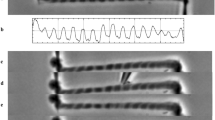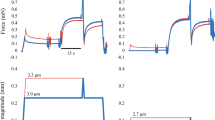Abstract
IF an excised beef muscle is exposed to a temperature of 0°–10° C soon after death, a shortening of considerable magnitude occurs during the subsequent 1–5 h1. Both the extent and the rate of shortening are less with higher temperature in this range, and also with longer delay before exposure to the cold environment. By appropriate selection of temperature and delay, therefore, shortening values ranging from nothing to more than 60 per cent of the initial length can be obtained.
This is a preview of subscription content, access via your institution
Access options
Subscribe to this journal
Receive 51 print issues and online access
$199.00 per year
only $3.90 per issue
Buy this article
- Purchase on Springer Link
- Instant access to full article PDF
Prices may be subject to local taxes which are calculated during checkout
Similar content being viewed by others
References
Locker, R. H., and Hagyard, C. J., J. Sci. Fd. Agric., 14, 787 (1963).
Macfarlane, P. G., and Marer, J. M., Food Technol., (submitted for publication).
Hanson, J., and Huxley, H. E., Symp. Soc. Exp. Biol., 9, 228 (1955).
Ramsey, R. W., and Street, S. F., J Cell. Comp. Physiol., 15, 11 (1940).
Marsh, B. B., and Thompson, J. F., Biochim. Biophys. Acta, 24, 427 (1957).
Author information
Authors and Affiliations
Rights and permissions
About this article
Cite this article
MARSH, B., LEET, N. Resistance to Shearing of Heat-denatured Muscle in Relation to Shortening. Nature 211, 635–636 (1966). https://doi.org/10.1038/211635a0
Issue Date:
DOI: https://doi.org/10.1038/211635a0
Comments
By submitting a comment you agree to abide by our Terms and Community Guidelines. If you find something abusive or that does not comply with our terms or guidelines please flag it as inappropriate.



